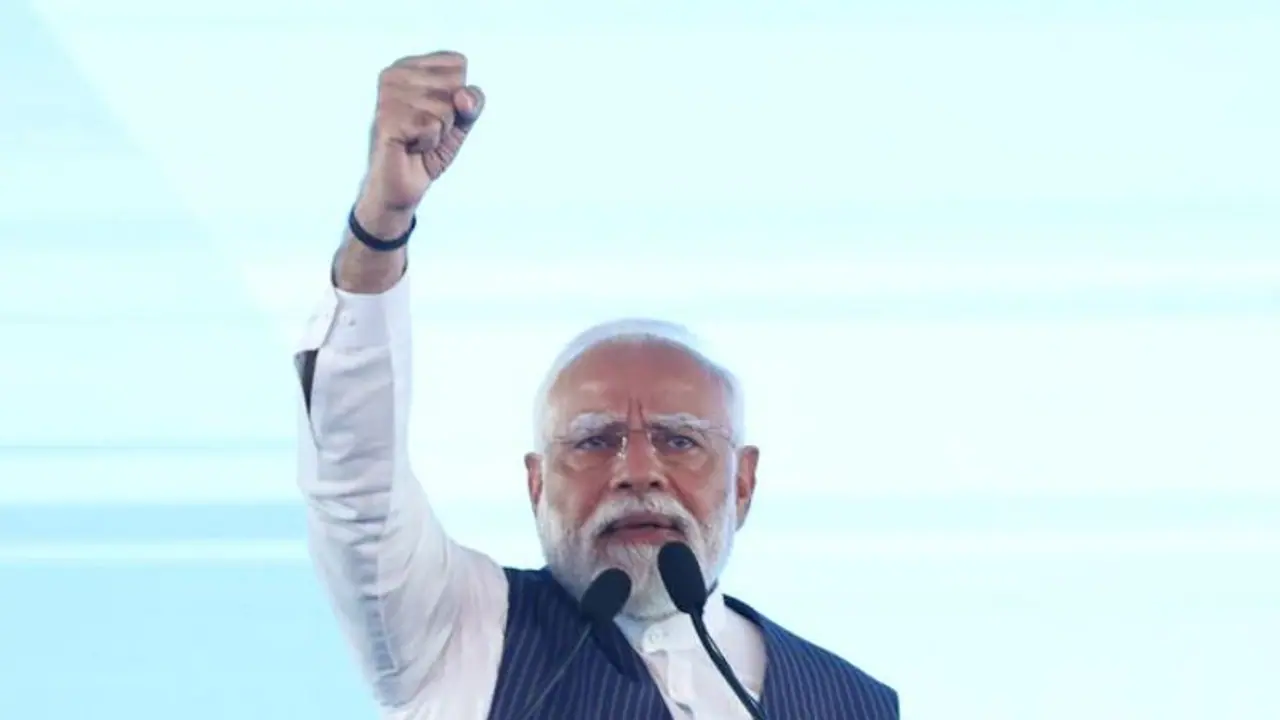A new paper authored by Shamika Ravi, member of the Economic Advisory Council to the Prime Minister, and Indian Statistical Institute Professor Mudit Kapoor, reveals an 18% higher growth rate in India during the Narendra Modi years of 2015-2020 compared to previous administrations.
India witnessed an 18 per cent higher rate of growth during the Narendra Modi years of 2015-2020, a new paper 'Politics in Action' authored by Shamika Ravi, member of the Economic Advisory Council to the Prime Minister, and Indian Statistical Institute Professor Mudit Kapoor states. According to Shamika, "The paper is meant to show using objective data, daytime satellite data, data which is irrefutable in terms of the way it is calculated and the way it is put together. It also maps real-time changes on the ground within such a large country such as ours. Different data sets were combined for this. We combined extremely high-resolution daytime satellite data with parliamentary constituency data, which is from the Election Commission. We looked at district and sub-district level data to study extremely localised growth over time, spanning about 15 years."

The paper underscores the government's significant allocation towards infrastructure in recent budgets, reflecting a commitment to enhancing connectivity and basic amenities across the country. The authors of the report outline the Modi government's philosophy of ensuring essential services reach every citizen nationwide. This encompasses access to vital amenities such as roads, electricity, drinking water, toilets, and affordable housing
Furthermore, the authors highlight the shift towards a virtuous cycle, where improved governance facilitates more effective direct benefit transfers, reduces leakages, and enhances state resources for investment in infrastructure and amenities. These endeavours, the paper notes, are pivotal for long-term productivity enhancement, laying the foundation for a developed India. In essence, the paper depicts the government's strategy as paving the way for a prosperous and inclusive nation, symbolized by the term "Viksit Bharat" (Developed India).
Let us take a look at what the data suggests:
* Under the NDA (2015 to 2020), the average growth rate of total built-up surface across parliamentary constituencies has been 3.3 per cent as compared to 2.8 per cent during the Congress-led UPA II government (2010-2015)
* The constituencies that have grown the most (at over 5 per cent) are those that are in the most backward and underdeveloped parts of the country. The number of such constituencies that have witnessed over 5 per cent growth has increased considerably under the NDA regime. In a nutshell, the fastest growth happened in the least developed parts.
* As far as the inherent inequality across the parliamentary constituencies, data shows that under the NDA government, the highest construction has happened in the least developed constituencies that are remote in nature. They have seen an increase of over 6.5 per cent annualised growth. While development did happen under the UPA II regime as well, the rate of growth in remote remained much lower.
* Looking at district-wise data, the annualised growth rate under the Modi government has been better off than the two tenures of the UPA. While UPA II (2.9 per cent) fared slightly better than UPA I (2.6 per cent), significantly higher growth has been witnessed under the Modi government (3.5 per cent) -- 21 per cent higher.
* The data reveals that there are districts in the country that have grown by over 10 per cent under the Modi government.
* On average, a district in India has a population of 20 lakh people. A granular analysis of data -- at the sub-district level -- shows that the results are consistent with the outcomes at the district level. Under the NDA, 31 per cent growth has been witnessed at the sub-district level compared to UPA I, which in itself was a period of high growth.
* Under PM Modi, almost seven per cent higher growth is witnessed in the most remote or the least developed parts of the country (which have less than 3 per cent constructed area within their boundaries). In other words, there has been a much greater reduction in inequality when compared to the UPA I and UPA II tenures. This is largely due to the Modi government focusing a lot of economic activity on the least developed parts of the country.
